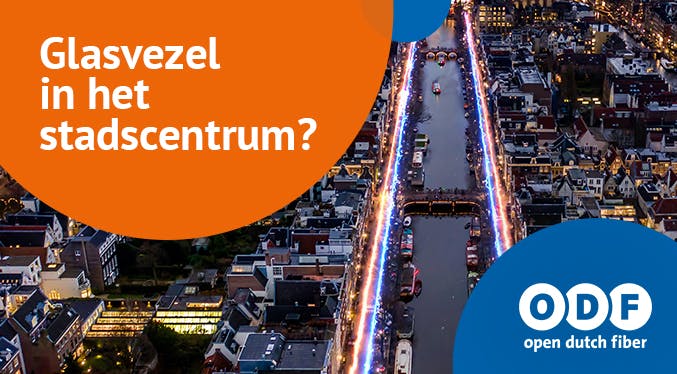Open Dutch Fiber accelerates fiber optic installation in cities with innovative solutions
Aug 3, 2023
Everyone in the Netherlands needs access to superfast fiber-optic internet. The rise of working from home, e-health, and the increasing number of devices means that copper cable connections will no longer suffice in the long term. Fiber-optic networks provide the solution. The only issue is that fiber-optic is not yet available to everyone, especially in city centers. But efforts are being made to address this.

City centers are lagging behind.
The cause of these disconnected city centers lies, among other things, in the enormous pressure on the available space, forcing municipalities to make choices. In order to ensure that consumers can make use of the ultra-fast fiber optic connection, local exchanges are needed. These are small houses where providers place their equipment, so that households can benefit from fiber optic internet. These local exchanges are often found in the public space on the street. In cities, this space is scarce, which is why fiber optic network operators often ignored city centers.
Accelerate glazing
Traditional installation methods pose challenges. In order to accelerate the digitization of the Netherlands and thus the glazing process, resourceful and innovative solutions are needed to tackle the spatial constraints. Therefore, fiber optic network manager Open Dutch Fiber has been searching for new ways to address the spatial challenges.
Utilizing existing buildings
The first solution may seem obvious, but it is a time-consuming task. Namely, making use of existing vacant buildings by renting or buying them. For example, in Amsterdam, the basement of the first skyscraper on Victoriaplein is being used. The former coal-fired plant in the basement, which had space available due to the switch to a central heating boiler, has been converted into a district heating plant. But it doesn't stop there. When there appears to be sufficient residual heat available, it will be used in the future to heat the residents' central heating boilers. Meanwhile, district heating plants have also been established in existing buildings in cities such as The Hague, Rotterdam, and Heerlen, providing over 360,000 households with a fiber optic connection through these district heating plants.Innovative ways to make optimal use of the available space are crucial for accelerating the rollout of fiber optic networks in large cities and thus the digitization of the Netherlands. It is the mission of Open Dutch Fiber to have 2 million households connected to a fiber optic network by 2025 and to benefit from super-fast, stable connections. With innovations like these, achieving this goal is getting closer and closer.

Superfast internet via fiber optic for everyone
More and more households are gaining access to superfast internet. Do the postcode check and check the status at your address.
Curious about what we do with your data? Take a look at the privacy statement.